|
Imani’s return to Montrose Beach on April 25 has all sorts of significance—he may be the only remaining offspring of Monty and Rose, he could bring nesting Piping Plovers back to Chicago, and he made it back after wintering more than a thousand miles away.
When Imani returned to Montrose Beach last year, he arrived on May 23. It ended up being too late to attract a female plover, though he ferociously guarded the beach and fended off many other species. Most all the other Piping Plovers had already passed through Chicago on their way to points north. Imani learned from last year and made sure a late arrival didn’t happen this year. He arrived around the same time that Monty and Rose had arrived in the past. He stands a better chance of encountering a migrating female and a better chance of engaging in courtship. And indeed, that happened late last week when an unbanded female showed up at Montrose. What might be most significant, though, is what Monty and Rose did as pioneers nesting at Montrose Beach from 2019 through 2021. They re-established Chicago as Piping Plover nesting territory after a 70-year hiatus. To Imani, having been hatched on Montrose, that’s all he’s really ever known. Chicago is his home, and he finds it just as enticing a place as anywhere on the Great Lakes.
0 Comments
In 1990, the entirety of the Great Lakes Piping Plover population had declined to a dozen pairs, all clustered in northern Michigan. Habitat deterioration had placed Charadrius melodus on the endangered species list. It was within the realm of possibility that the “dreary peep” of the Piping Plover, as described by Thoreau, would fade away from the Great Lakes forever.
Last year was a banner year for Great Lakes Piping Plovers, thanks to the Great Lakes Piping Plover Conservation Team, which monitors, bands, and rears Piping Plovers. Great Lakes Piping Plovers fledged 150 chicks in the wild from 72 breeding pairs—the highest number of fledglings for decades and decades. “They’re our recruits for this year,” says Stephanie Schubel of the Conservation Team. “If they made it through the winter, they could bump us up. My plover gut tells me we could have one or two more sites next year. It has to be a male and female landing at the right spot and pairing up.” After a few years of near-record water levels, the Great Lakes have receded. That means wider beaches, more habitat, and more space to share with people. An abnormally dramatic alewife die-off may have had an impact, too. “Maggots and bugs are good food sources for plover chicks,” Schubel says of the dead alewives. “The shoreline was looking beautiful, and we didn’t have any real big storms that affected nests and caused washouts.” Last year’s success was achieved without nesting plovers in Chicago and Ohio (much to our disappointment on the southern tier of the lakes). However, Monty and Rose’s chick, Imani, returned to spend last June at Montrose Beach. He failed to attract a mate despite fiercely defending territory within the protected Montrose Beach Dunes Natural Area. His presence has us optimistic for a return this year, though he wasn’t reported from the wintering grounds. “It really doesn’t mean that much [that he went unreported],” Schubel says. “So many birds migrate through Chicago. It only takes one female to be enamored with him. Even if it’s not Imani, there’s hope for another pair to land there. You have so many people watching and keeping a lookout on the space. “Fledglings had a stellar year in Green Bay and Long Island [Wisconsin]. The Apostle Islands with six nests have been a stronghold. I feel confident you’ll get another pair.” Winter observers have been fearful of the impact of Hurricane Ian and a few cold snaps. Mia Majetschak, the Chicagoan-turned-Florida resident who kept tabs on our beloved Rose last winter, recently spotted five plovers on Anclote Key, Fla., including birds from Michigan, New York, and Ontario. The sightings provided optimism. One bird, though, garnered extra attention on the Great Lakes Piping Plover Facebook page: And last but not least, one that my heart definitely throbs for, is the 1-year-old Silver Lake State Park, MI hatch O,G:X,- (Ydot, G403), the only fledgling that survived Silver Lake in 2022, who happens to be a half-sibling to the famous “Monty” of Chicago. We know where individual plovers go because they are banded as chicks (“O,G:X,-” and other terms identify their leg bands). Even with sharp-eyed observers, it is hard to know exactly how the plovers have fared on the wintering grounds of the Gulf and elsewhere. Schubel says the first arrivals could be as early as April 7, when there still may be snow on the beaches of the upper lakes. Monty’s dad, YOGi, is often an early arrival at Silver Lake. “We won’t know the details until the spring, but we’re always hopeful.” Learn how to watch the "Monty and Rose" documentaries here.
Most all of the Plover Watch volunteers knew that even one summer with Piping Plovers Monty and Rose was an experience that might never happen again. The fleeting nature of it--a species down to only 70 pairs nesting on the busiest beach in Chicago--was why it was so special. The birds’ presence became something that thousands of people rallied around and introduced untold numbers of people to Piping Plovers and birding.
Here’s a clip from “Monty and Rose 2.” This was from 2019, before Monty was a household name, before we knew what would happen in the years to follow. This is the kind of thing Monty did routinely, and I hope to see a Piping Plover chasing off predators in Chicago someday again.
The reactions to Monty's passing have been the most positive thing to come out of the last few days. Here's a sampling of comments from Twitter and Facebook on what Monty meant to people. These sum things up better than I ever could myself.
Heather Kenny: He was truly a living symbol of the city motto, “urbs in orto.” Nature is everywhere, even in cities, and protecting and cultivating it makes a big difference—even when it’s just two birds. Raed Mansour: When anything is vulnerable, we all are. Protecting them protected so much more. It’s a lesson I hope we never forget that applies to nature, animals and each other. Maggie Hendricks: It's THAT Chicago rallied to keep these rare birds safe. Chicago listened to scientists and birders and did everything to keep these sweet birds safe. To be as cheesy as possible, it showed me what Chicago is capable of. Carl Armstrong: Hope. Joy. A lot of joy. A brighter future. Proof that ordinary individuals change outcomes. And as others have mentioned, a few plover-colored specks of light set against a vast, black void. Dustin: I worked at Kayak Chicago at Montrose the year he arrived and we’d get to see him everyday. By the end of the summer he felt like a close friend. Every morning we were some of the first ones on the beach & we’d watch him as we set up our boats. Everyone was delighted to see him. Ty: A sign of hope in community. That for just once in our lives we’ll do whatever it takes to let this adorable species live on. Carolyn Torgersen: Adoration for the pair reached far beyond Chicago. I shared Monty, Rose + baby chicks updates with family and friends across the country who came to love them as much as I did. Their story was a little piece of goodness during some really dark times. Julie Vassilatos: I was astonished that the city bent over backwards to do whatever necessary to keep Monty and Rose and their eggs and chicks safe--even once Jessi Haley: Monty & Rose got many more people interested in birds & in the lakeshore as a home for nature. Early battles over volleyball etc replaced by growing enthusiasm. The volunteers have been great advocates & educators (especially Tamima Itani). Thank you to Monty ChicagoDenise: I love our big, noisy, boisterous city. It’s also nice to know that peaceful nature is alive and well —it amazed me that they could bless us with their special uniqueness right next to all the craziness. Our city never fails to surprise, in a good way. They united us. And this from Kelly Rauch in a post on Chicago Audubon’s Facebook page: I feel strongly that the death of these birds have affected everyone on a much deeper level in that they represented hope. Any true birder and lover of nature and all the world's creatures, is truly fighting an upward battle in the fight against climate change, and our environment suffering constant blows with several species of animals being on the brink of extinction. These little beings for a short time gave people great hope that if they survived, they could be restored to a better numbers. I am hoping that everyone continues to do their part and fight for our planet and all that live on it through this experience even though the outcome was dire. It is very sad but personally it makes me stronger and wanting to do more. So be bummed and carry on and do more or at least what you can and continue to fight. ( I hope this doesn't sound preachy, I am hoping to uplift and inspire anyone that might feel like it is hopeless because I sure did feel that way when I heard about this). Patricia A. Martinez: Every time I go to the Montrose Bird Sanctuary, I am impressed by the number of people there, pointing their eyes, their cameras and binoculars up at the trees. These birdwatchers excitedly share sightings and information, amateur and the most knowledgeable as well. All touched by these tiny, beautiful creatures. At that point I wish I could bottle their emotions and spread them across the world, that all people could share the love. Debbie Pratscher Lamoureux: It really brings it home how many perils these little birds face, and not all of them from predators, that they were so closely watched and yet... and Rose's fate is unknown. We were lucky to have them even for a short time. Pat Reavy: Nest in Peace little guy. You and Rose gave Chicago three glorious years that we will NEVER forget. See you and Rose on the other side. Sharon A. Walker: In his honor may the conservation efforts continue & grow. An offspring would be brilliant. Shana Conner: He was such a good husband and father. He was willing to fight anything to protect his nest. He tried to fight ME when I got close to his nest to retrieve a volleyball. I will miss him so much. Nicole: This really is the worst news. I am crying here, so I cannot imagine the sorrow all the volunteers who protected Monty and Rose are feeling right now. I am so, so sorry for your pain. As I was at the Indiana Dunes Birding Festival this weekend, I learned something about one of Monty’s half-sisters, also born to Yogi at Silver Lake State Park. The young plover has taken up residence on an island in Michigan, Fisherman’s Island. And she has found a mate there, a place where Piping Plovers haven’t been in years. Mia Majetschak makes regular visits to Anclote Key, Florida, to check on wintering Piping Plovers. The 180-acre key isn’t necessarily an easy place to get to—it’s 3 miles off-shore and requires a ferry ride or having a catamaran or kayak. Majetschak’s mode of transport is an inflatable catamaran. Getting to Anclote means encounters with dolphins, sea turtles and sharks and sailing some rough seas in the Gulf of Mexico. “Once in a while you crash because the waves are too much or you rip a hole into the inflatable hull,” Majetschak says. She was photographing Piping Plovers on Oct. 17 when she encountered one that had an air of familiarity. Maybe it was the unique leg band combination, which was similar to that of a bird she knew in her old Chicagoland haunts: Of,RV:X,B (Orange flag on upper left leg, Red band over Violet band on lower left leg, Silver band on upper right leg and Blue band on lower right leg) There might be only one Piping Plover in the world with those leg bands. That Piping Plover happens to be our beloved Rose, who’s nested the past three summers at Chicago’s Montrose Beach with her handsome beau, Monty. “I was close to fainting when I saw the bands and knew it was her,” Majetschak says. Rose wasn’t alone, though, Majetschak also located her 2020 offspring, Nish, who was in Florida after a successful year of making history of his own in Ohio. “I love all plovers and birds and knowing the longtime efforts to save our Great Lakes plovers, I made it my ‘winter’ mission to find the birds,” Majetschak says. “Carrying the gear through the sand isn’t always fun but the moment I see the plovers all misery is forgotten and I am pumped.” Majetschak’s encounter is just one of the plover highlights from this off-season. As we await the birds’ return, likely in late April, here's a rundown of all that’s happened since the Piping Plovers departed Chicago. August 16 - Houston, we have a plover: Monty jets to Texas We knew Monty was fast, but this fast? Kristen Vale, with the American Bird Conservancy, provided Chicago Piping Plovers with a digiscoped photo of Monty at...East Beach, Galveston, Texas. He was last seen on a Saturday morning in Chicago; two days later, he was in the Lone Star State. Yet another reason why we're fortunate to have plover spotters on the winter grounds as well as the breeding territory. October 22 - A winter home for Ohio plover dearie ErieWord came on Oct. 22, that Erie, one of Nish and Nellie’s 2021 chicks, would be spending winter in the Detroit Zoo. Erie hadn't migrated from Maumee Bay when summer ended and had been treated previously at the zoo for an illness. Upon release, Erie stuck around the beach and didn’t migrate south. The decision was made to keep Erie in the zoo for the winter, and by all accounts the juvenile bird is healthy and comfortable there. October 26 - Ida takes Gulf Coast by stormHurricane Ida was a Category 4 hurricane that made landfall east of Monty’s wintering ground, in Louisiana. Good news came on Oct. 26, when Vale shared a photo of Monty from East Beach in Galveston. Severe storms are some of the greatest threats Piping Plovers face. December 21 - It's a girl!Though Maumee and Ottawa haven’t been spotted this winter—nor Nellie for that matter--an interesting piece of news arrived about their sibling, Erie: It’s a girl! The gender of juvenile Piping Plovers is unknown until it becomes obvious when they return to the Great Lakes for breeding. Erie is enjoying her time at the zoo, where she loves “all kinds of bugs.” 2022 outlookWe approach 2022 nesting season with a number of questions. What happened to Imani and Siewka, the chicks hatched to Monty and Rose last year? Will we see them again? Where will they show up?
What about Nellie and Nish, and offspring Maumee and Ottawa? Where will they be seen? Might we have Piping Plovers turning up in other unexpected places on the Great Lakes (see Indiana Dunes)? Will they hatch chicks of their own? The possibilities are endless. Last but certainly not least, will Monty and Rose return again? When will they return? Migration journeys of 1,000-plus miles are not to be taken for granted. Sad to say, but it's not a fait accompli that Monty and Rose will be with us forever. Until then, stay warm, keep birding and, as always, take pride in being part of the conservation success story of a lifetime! "Monty and Rose 2" is an official selection of the Thunder Bay International Film Festival1/21/2022 We're pleased to share that "Monty and Rose 2: The World of Monty and Rose" will make its film festival premiere at the Thunder Bay International Film Festival, starting Jan. 26. The festival brings together a collection of more than 75 independent films focused on the ocean and Great Lakes. The entire 12-day film festival is offered virtually so viewers can participate in the festival from the comfort and safety of their home.
The film festival is hosted by NOAA’s Thunder Bay National Marine Sanctuary (Alpena, Mich.) in partnership with the International Ocean Film Festival (San Francisco, Calif.) and supported locally by the Friends of Thunder Bay National Marine Sanctuary. Featuring an extensive collection of acclaimed, independent ocean and Great Lakes films of the past year, the festival features options for all ages and interests, ranging from adventure and science to marine life and coastal cultures. “This year we even have a little romance featuring “Monty and Rose II,” a film about a pair of Great Lakes endangered shore birds that have become an international sensation,” notes TBIFF Film Festival Coordinator Stephanie Gandulla. Conservationist and film director Bob Dolgan documents Chicago’s beloved piping plovers from their hatching in 2017 to their courtship, nesting, and raising chicks over three summers. As one of only 70 breeding pairs in the Great Lakes region, their inspiring story is just one of many inspiring films featured in the TBIFF 2022 program. For detailed schedule, ticket pricing, and film descriptions, visit www.thunderbayfriends.org. "Monty and Rose 2" will be available to view at no cost between Jan. 26 and Feb. 6. It was a pleasure to see so many plover fans, volunteer monitors and other supporters at the premiere this weekend at the Music Box! I am especially grateful to our moderator Paris Schutz of WTTW 11 and to fellow panelists Stephanie Beilke of Audubon Great Lakes, Brad Semel of Illinois Department of Natural Resources and Tamima Itani of Illinois Ornithological Society.
As much as completing any film feels like an end unto itself, it also means that this is when some more fun begins. That is, the fun of sharing the film with so many community organizations, schools and the general public. All along this project has been about educating others about endangered Great Lakes Piping Plovers and the many other interesting (and threatened) bird species among us. I look forward to what's next, and if you ever have any questions at all about this project, please don't hesitate to reach out. My most recent Piping Plover monitoring shift was my 14th since late April. Back then the temperatures were in the 40s and 50s with a stiff north wind. This time it was 85 degrees, hot and very calm. The dew point was an almost-unbearable 71.
The mood was somber. We’d just received word that Monty and Rose had lost two of their four chicks. My monitoring partner and I watched as Monty tangled over and over with an aggressive Killdeer. Monty would run at the Killdeer and away from it, enticing it to move from the grasses where the two remaining chicks were hidden. The Killdeer had an agenda, though, too, as its spindly juvenile was hanging around a few yards away. The Killdeer didn’t want the Piping Plovers around, and the Piping Plovers didn’t want the Killdeer around. It was a territorial battle one can imagine unfolding across the Great Lakes this summer, if not for centuries. There was so much optimism on the beach when Rose and Monty returned to the beach in late April this year. People were being vaccinated. The world was opening up again. Something like a normal summer was on the way. But somewhere things became...more challenging...not unlike society’s wrestling match with a stubborn and insidious virus. Monty and Rose started the season with a nest in the middle of the new Montrose Beach Dunes habitat addition; it was the epitome of a conservation success story with a touch of serendipity that they chose to set up right where we wanted. Then there was a bizarre incident with a mylar balloon stuck against the nest exclosure in May. A couple weeks later a skunk attack resulted in the loss of all four eggs. It was a major setback, though the birds took it more in stride than many of their protectors. As if to underscore the vagaries and vicissitudes of shorebird life, Monty and Rose’s chick Nish became a dad a short time later. Nish and his mate, Nellie, stunned everyone by becoming the first Piping Plovers to nest in Ohio in 80-plus years. They went on to raise four young ones to fledging in their first year as parents. It was a jaw-dropping feat, and one that will forever go down in Ohio birding lore. Monty and Rose quickly re-nested, though the new site was closer to the dynamic shoreline and to a copse of willows (read: predator hangout). Maybe it was too much to expect a repeat of past year’s successes. We always knew that we were lucky. This year only seemed to confirm that. Monty and Rose tended to their new nest faithfully, through a number of hot, dry days on the beach, and later, a couple of wicked storms. The four chicks hatched on July 7 and 8. The story of one chick wasn’t so simple, though. It was brought to Lincoln Park Zoo as an egg. There it incubated until it hatched. And in one of the most indelible moments of the summer, zoo staff and plover volunteers returned it to the beach to join its parents and siblings on the morning of the 10th. All four chicks made it to banding on July 20, but within days two had gone missing. Falcons, killdeer, gulls...the potential predators are almost too numerous to count. It was nearly impossible for volunteers to possibly intervene and stop an attack. We can take solace in the fact that “Zoo Baby,” now officially Siewka, is still with us. Siewka (pronounced SHE-ev-ka) and sibling Imani may be the next-generation plovers to follow in Nish’s footsteps. Still, most of us are ending this season smiling. The reality is that Monty and Rose have hatched 11 chicks from the busiest beach in Chicago during the past three summers. And absolutely no one could have ever predicted that. My new documentary, "Monty and Rose 2: The World of Monty and Rose" makes its debut on Sept. 4 at Chicago's Music Box Theatre. This is an hour-long, supersized version of the first film, with more interviews, new characters, new storylines and much more in the way of Piping Plover footage. Join us for the premiere or at the second showing on Sept. 6. a portion of proceeds from ticket sales go to the nonprofit Chicago Ornithological Society. The Great Lakes Piping Plover Conservation Team came to town on the morning of July 20 to band Monty and Rose's four 2021 chicks. The unique numbers and color combinations on the bands ensure that plovers can be tracked throughout their lives. If not for the bands, we wouldn’t necessarily know that Monty and Rose’s chick Nish has gone on to nest in Ohio this year.
After the banding, I caught up with Stephanie Schubel, Field Lead for the Conservation Team which is affiliated with the University of Minnesota. Stephanie and her colleagues have been traveling all around the Great Lakes at a breakneck pace this spring and summer. Here are excerpts of our conversation: BD: Can you describe for us what the Conservation Team does? SS: We run the project to try and reach the goal of 150 pairs of Piping Plovers. How we do that is all the things involved: exclosures, enclosed areas, monitoring, banding and education. BD: What is the hardest part of this? It seems you’re everywhere at this time of year. SS: The hardest part is the travel. I always have my phone on, so monitors that know me, anyone on the project--Fish and Wildlife, the University of Minnesota--my phone is on every day including Sundays. It’s such a short season, but it’s constant. It’s like a high. It’s thrilling, but it’s also tiring. Part of the fun is going to these places and meeting all these wonderful people who are so inspirational. It’s hard, but it’s also awesome. SS: On Friday, Rachel who’s a field tech who works under me at Silver Lake (Michigan), texted me at 7 o’clock at night and said, ‘I have sad news. The male’s not here and he was here yesterday with two chicks. And now there’s just one chick here that’s 18 days old, and there are fox tracks everywhere.’ It was heart-crushing in one way to know that this male is probably gone who was a great dad. It was sad to hear. But there was also the possibility of taking in that chick and saving it. There are sad things and hard things that happen, but there’s also always something hopeful going on in the project that keeps you going. BD: Where do Monty and Rose and Chicago fit into this for you? SS: This is definitely amazing! When they moved here for nesting, a lot of people were like, ‘No way, this is not going to happen.’ Even I might have been like, 'good luck with that.' Then when they did, all the people came together from all over the city to protect them. My heart just grew. To watch and see how successful it’s been over the years and now Ohio and all the wonderful people. If this can happen here we can make this happen anywhere, really. This is a huge city and there’s all kinds of things, all kinds of emergency situations that can happen to a little plover. All the support we’ve had from all the agencies and all the people, it’s totally inspirational. It’s a high point for sure. We’re definitely making progress toward the goal. We’re going to get close and keep working at it no matter what. We’re getting more and more people involved in the whole journey and that’s great. That’s what Chicago shows. I have been working on the feature-length “Monty and Rose” documentary on and off for most of the past year. This film is going to be longer, at least double the length of the original short, and will stretch the story out over several years. Music will again feature local indie favorites Congress of Starlings, and this time we also have tunes from San Diego ska pioneers Spy Kids. There are many new and fun features in this film, and I look forward to sharing it with you!
The new film will make its debut on Saturday, Sept. 4, at 1 p.m. at the Music Box Theatre in Chicago. There will be a second showing Monday, Sept. 6, at 2:30 p.m. Tickets will go on sale this Friday at 10 a.m. at www.montyandrose.net. And soon we’ll be sharing how you can watch the film through streaming as well. "Monty beat his wings faster. Any minute now he’d be with Rose. Last summer they had promised to meet at Montrose Beach to nest there.
"A song filled his heart when he spotted the beach. ‘Pip-pip-pip-pip,’ he called to let Rose know he was back. But who was that other Piping Plover? A male! He was dancing for Rose!" The above excerpt is from the beginning of “Monty and Rose Nest at Montrose,” a children’s book written by retired healthcare industry professional and “Plovermother” Tamima Itani. The book goes on to chronicle the 2019 nesting season, Monty and Rose’s first in Chicago, and the hatching and rearing of two chicks. Most of you may know Tamima as the volunteer coordinator for Piping Plover monitoring efforts and as a board member of the Illinois Ornithological Society. I enjoyed reading every word of this book, especially the nifty depictions of actual events like the one above (there was a rival plover at Montrose in early 2019). Anna-Maria Crum provided the lovely illustrations for the book, which is available via the Plovermother website. One hundred percent of the net proceeds from sales will be donated to support research and conservation efforts of Piping Plovers and shorebirds. |

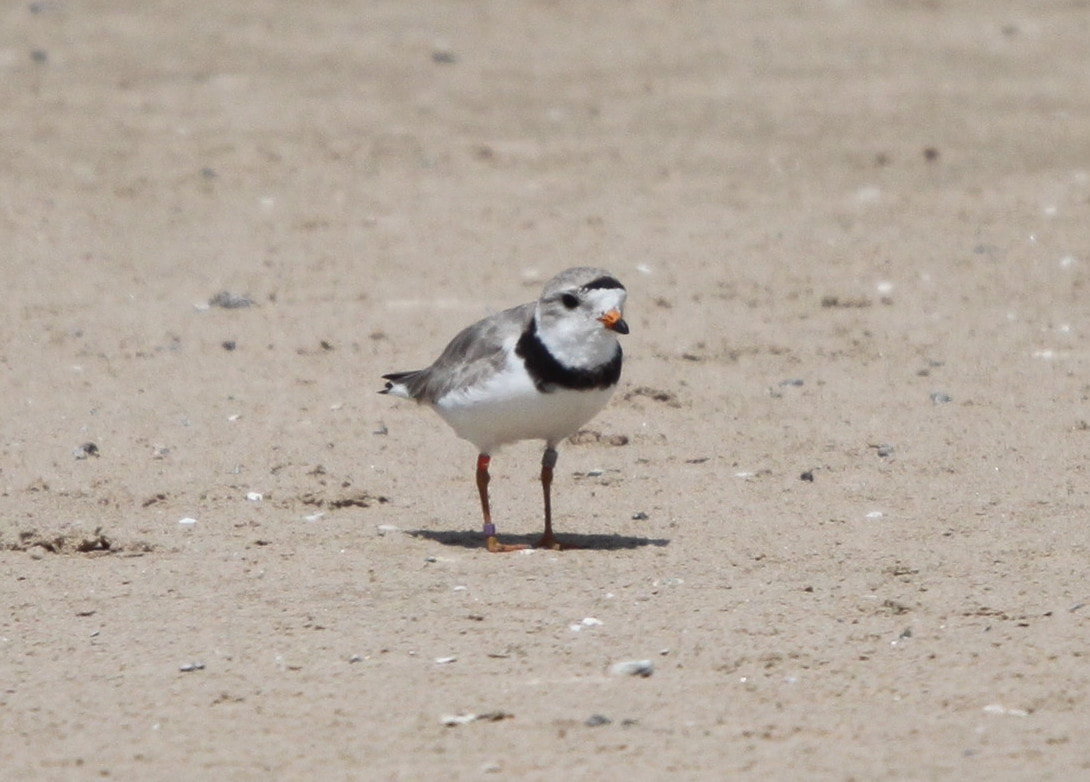
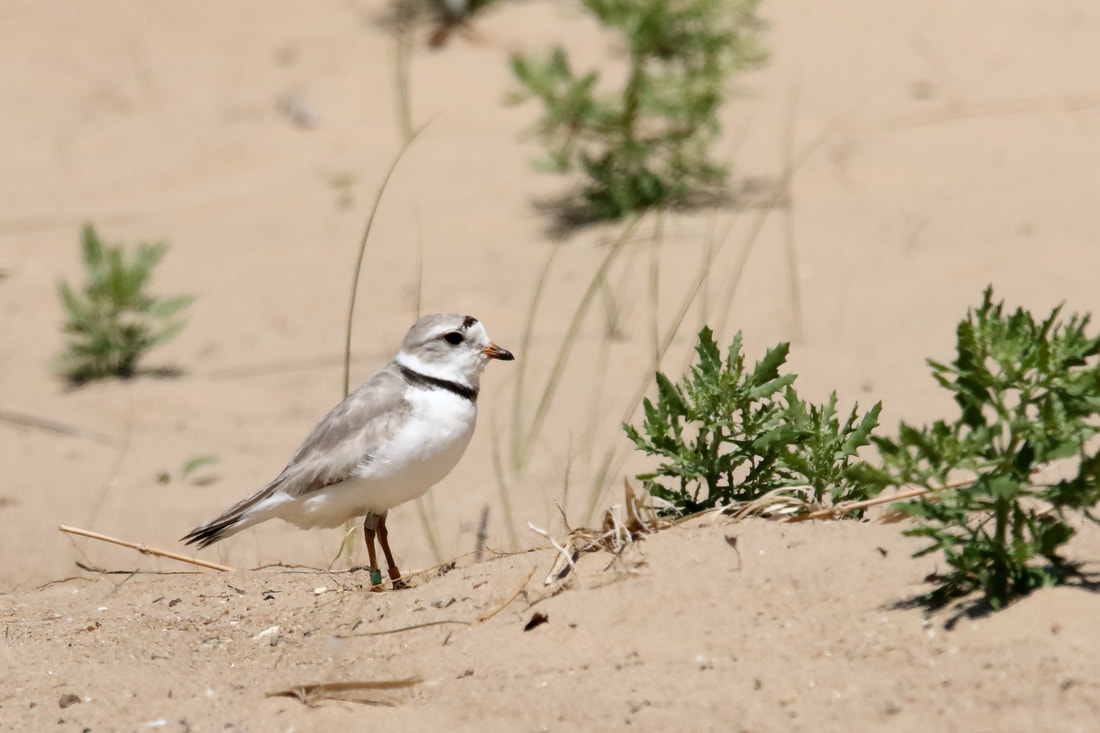
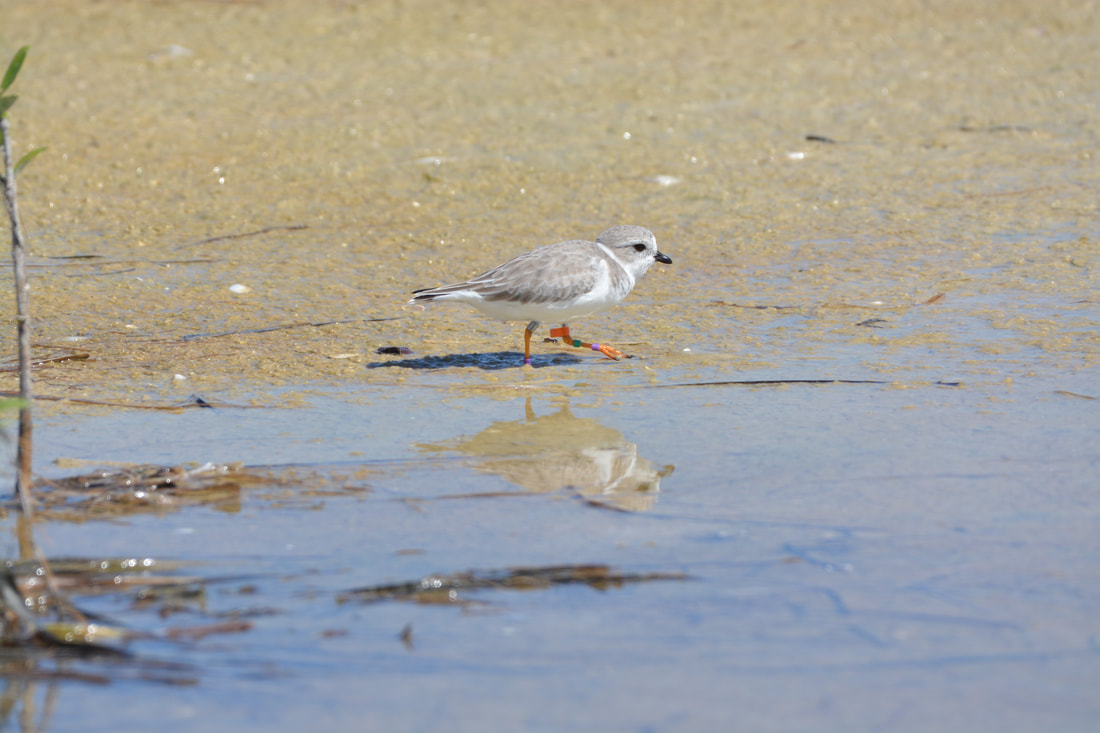
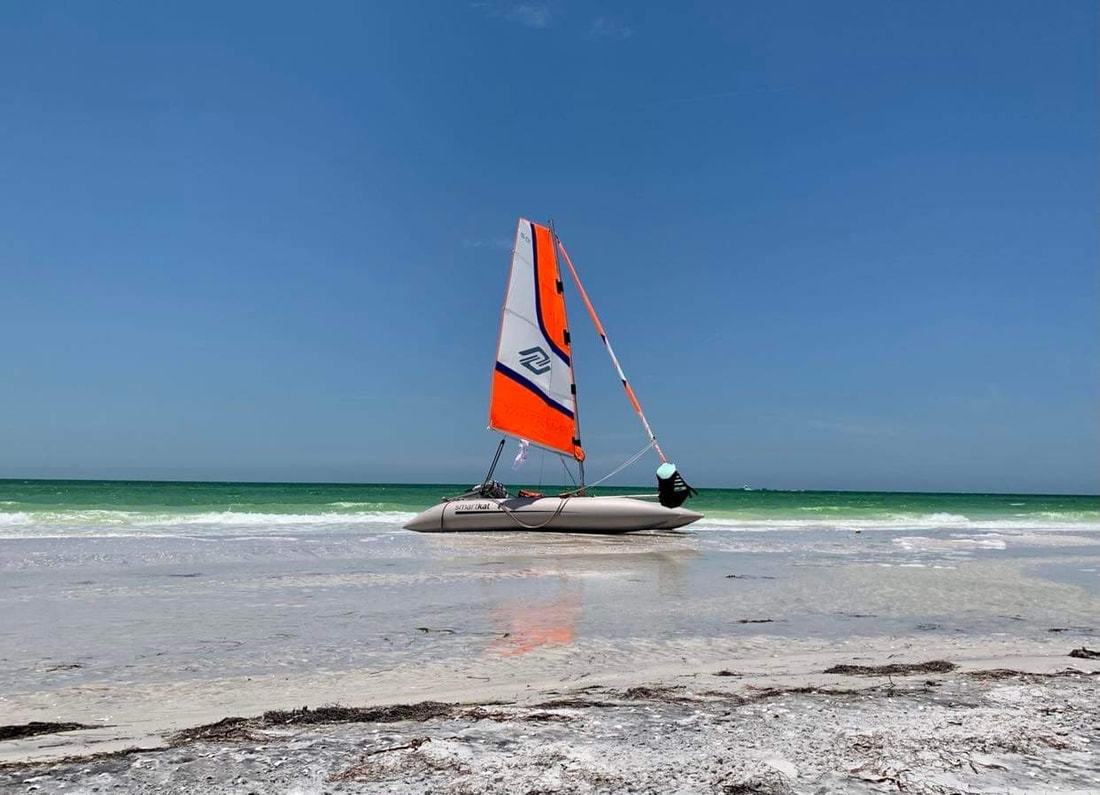
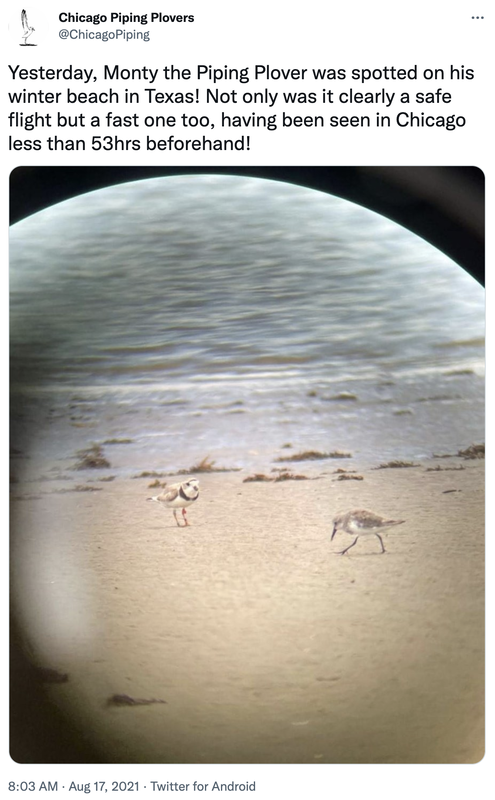

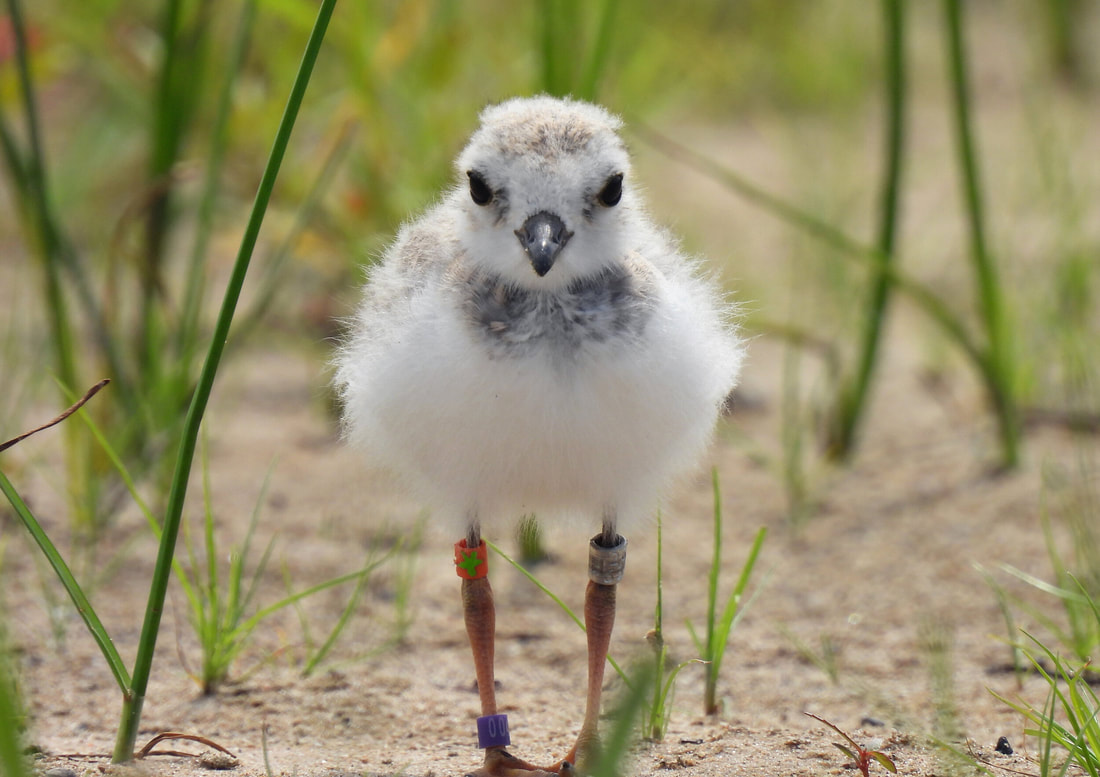

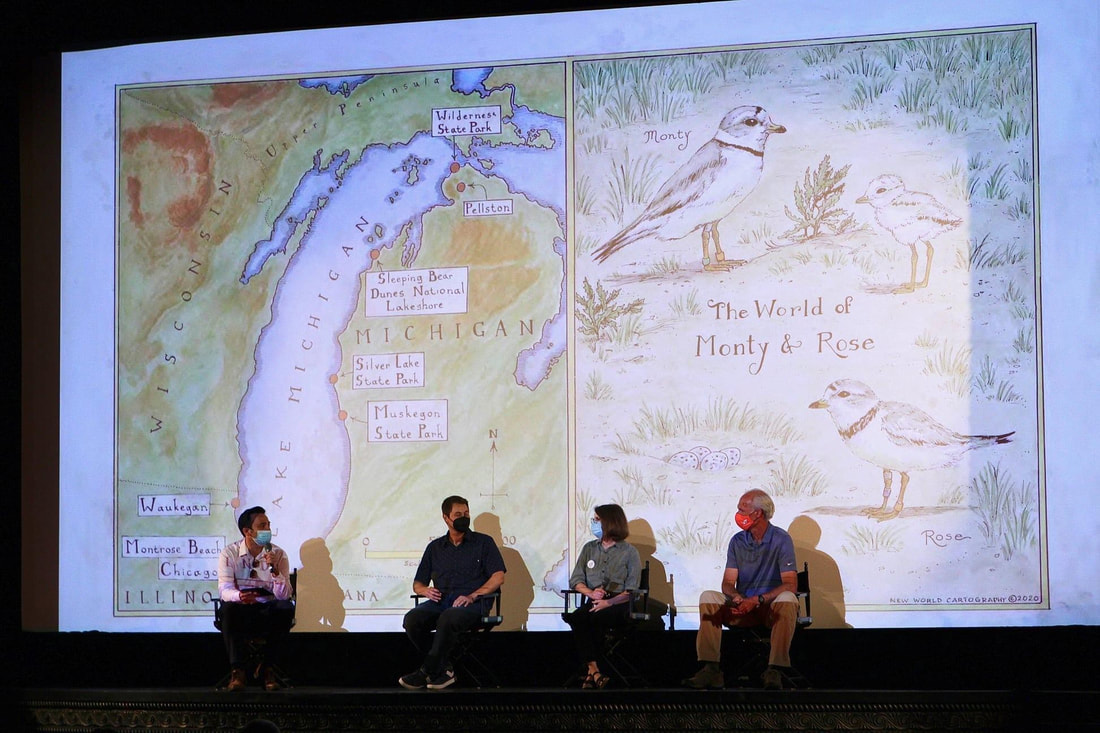
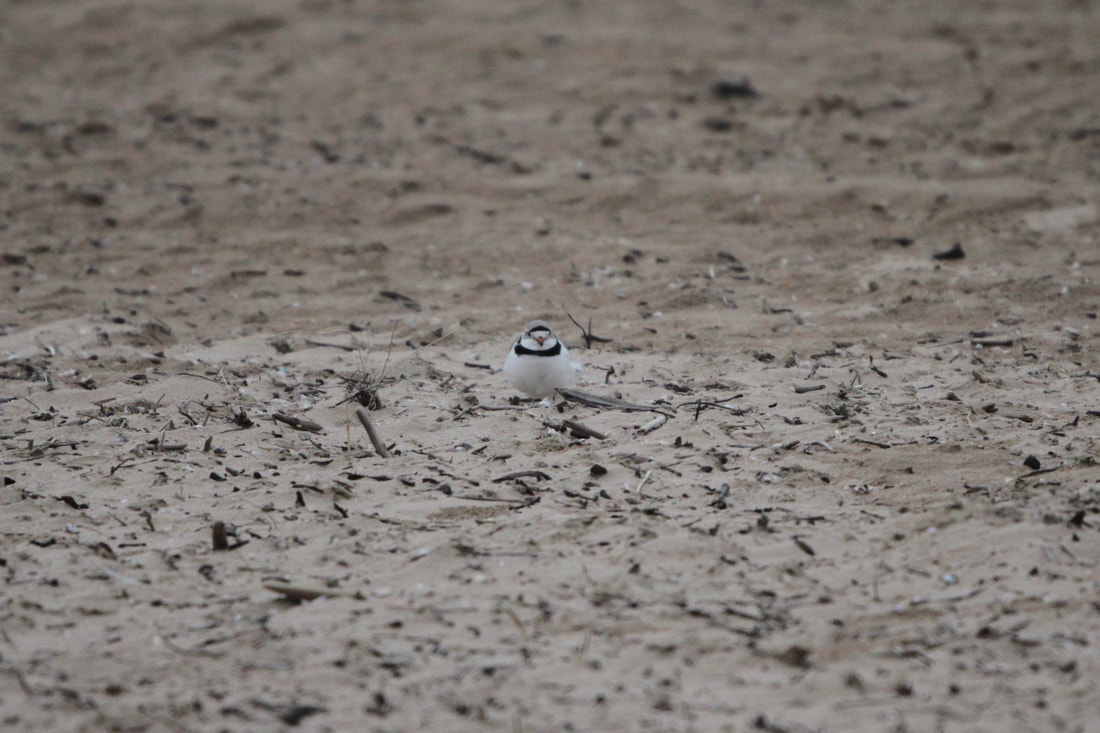
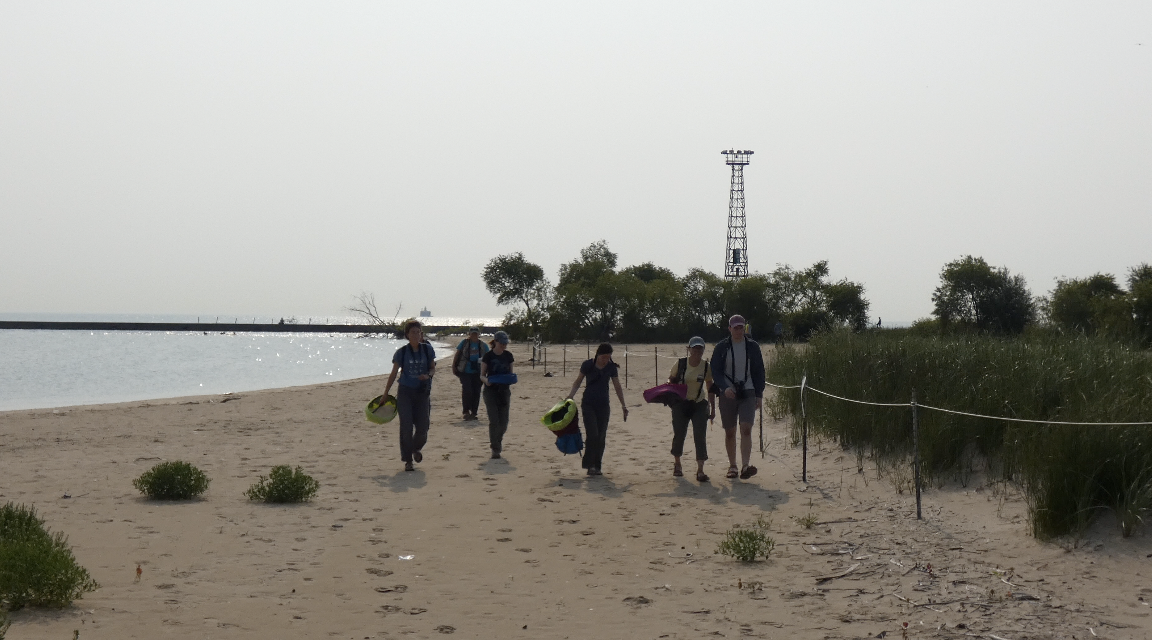
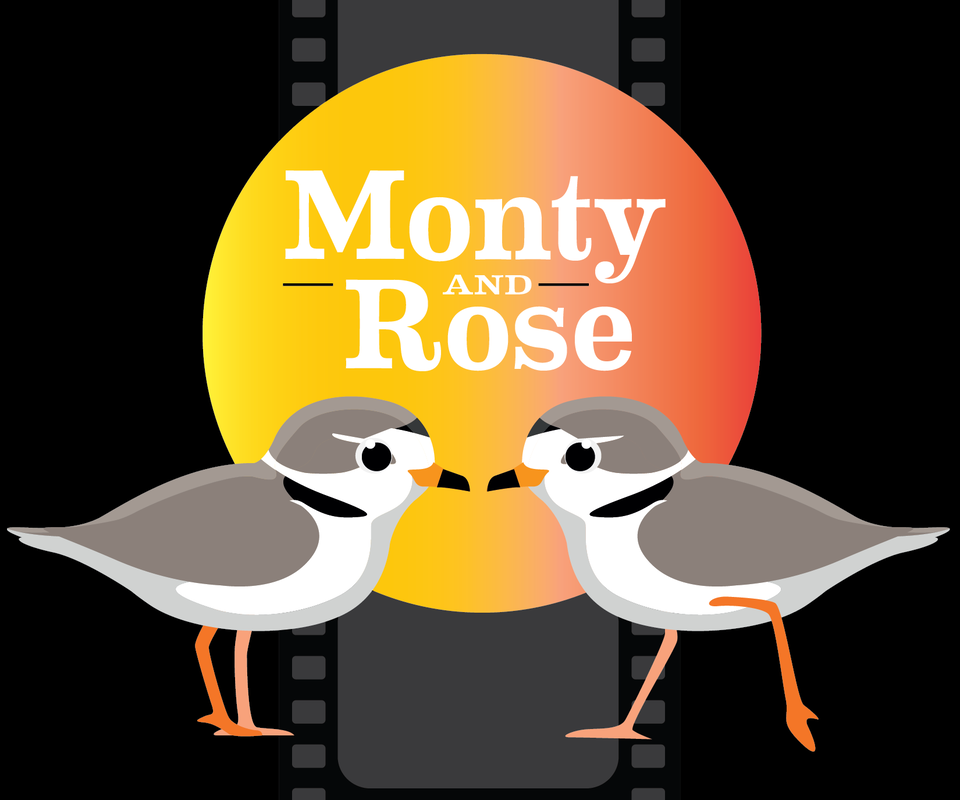
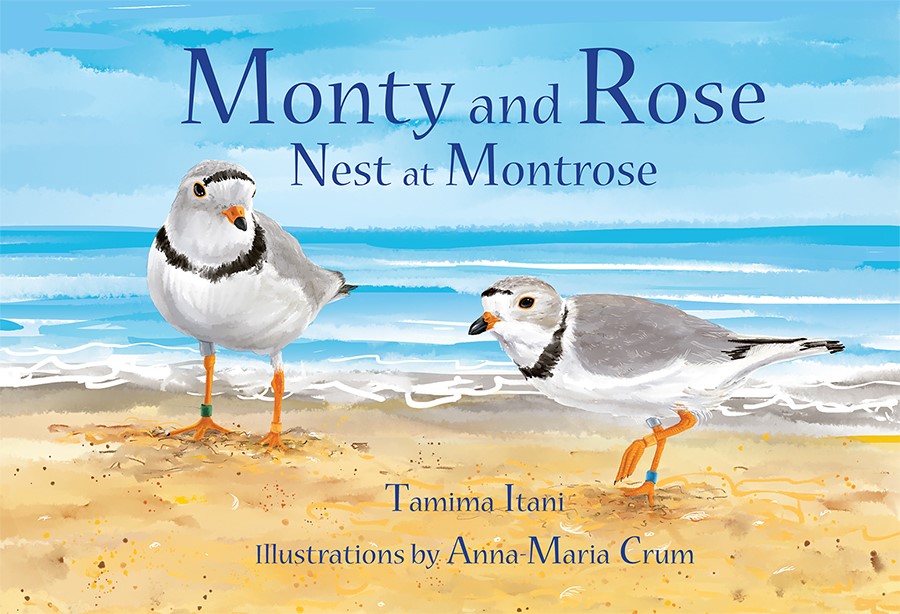
 RSS Feed
RSS Feed